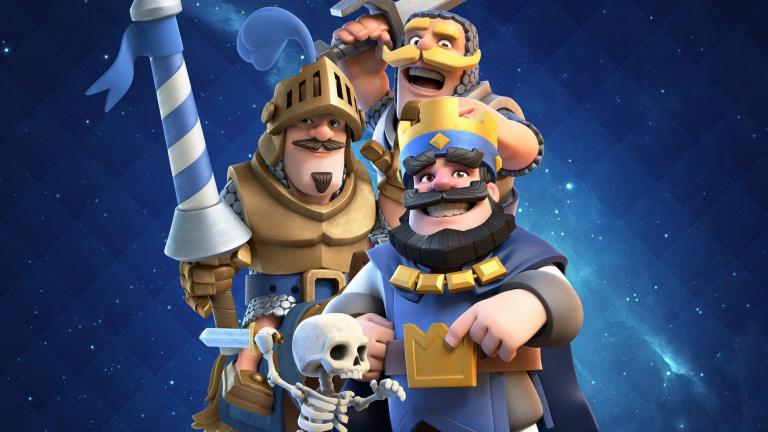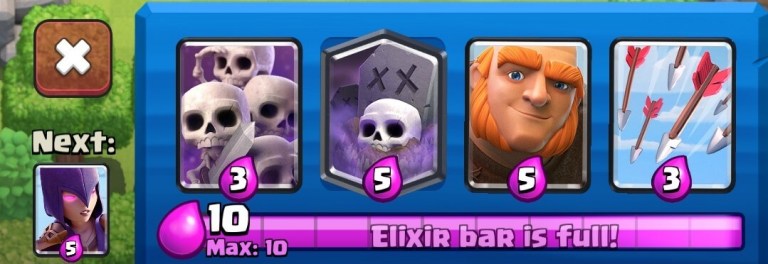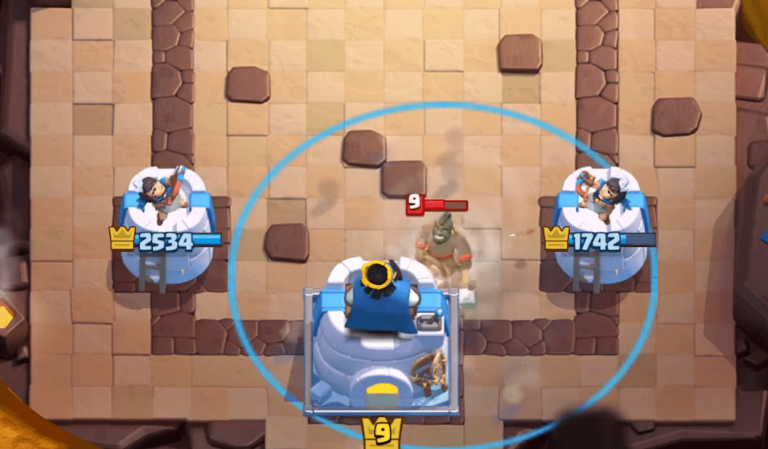Clash Royale - Tips, Tricks, and Advanced Gameplay Strategies


Deck Building & Progressing
Don't Upgrade Every Single Card
So what to do instead?
Focus on building decks and not individual cards. Either build a deck yourself or choose a meta deck (more on that later) and only upgrade the cards used in those decks.


Balance and Synergy is Important


An average elixir cost between 2.5 - 4.5: A deck too expensive will make countering your opponents’ attacks difficult, and a deck too cheap might lack enough firepower.
The "Win-Condition": Cards that you rely on building your ‘main’ push with. These are usually building-targeting troops, and the entire deck is built around the win-condition. Some of the best win-conditions in Clash Royale are Hog Rider, Golem, Lava Hound, Giant, Graveyard, etc.
Support Troops: These can be ground or flying troops that you’ll use in conjunction with your win-condition while attacking. For example, Good support troops for Golem can be Night Wight and Baby Dragon. Similarly, for Hog Rider, they can be Ice Golem or Valkyrie.
Defensive Cards: What do you expect when your opponent rushes in with a bunch of heavy-hitters, and all you have is three skeletons with their petite pocket knives? Nothing pleasant. Include solid defensive units (such as Ice Wizard or Goblin Gang) and possibly a defensive building (such as Tesla or Bomb Tower) in your deck.
- Spells: There are hardly any good decks in Clash Royale without a spell. Not only can a damage-dealing spell prevent your opponent from rushing in with huge pushes, but it’s a foolproof way to deal damage to your enemies’ Crown Towers consistently.
Join a Clan
Clan Wars.
Donating and requesting cards (and now Trading) from other clan members. This will help both you and your friends upgrade your deck much faster.
Friendly battles to improve your skills and test different decks without any risk of losing trophies.
In-game chat to discuss strategies and other tips.
Use Meta Decks to Win More Games
Winning in Clash Royale demands your "current meta" game to be strong.
But how do you know what the meta is?


The easiest way to know that is by looking at resources like Deck Shop Pro, Stats Royale, or RoyaleAPI. You can find all the popular decks from the current meta and the decks used by all the top players.
Participate in Challenges and Tournaments


Make sure to complete all the Events and Special Challenges. Keep in mind that some of these challenges unlock only when you are at a certain level.


You can also pay Gems to enter a Classic Challenge or a Global Challenge but only do that once you’re experienced at the game. Otherwise, you’ll simply be wasting Gems.
Battle Strategies
Manage your Elixir Wisely
Like Gold is the single most valuable resource for progressing in the game, Elixir is the most valuable resource during battles. Elixir management can be summarized in the points given below:


Don't leak elixir: While in battles, your elixir bar replenishes constantly, and if you’re sitting at full elixir, you’re only leaking it. This is important, especially when your opponent has already played a card, as it will give them a significant advantage.
Don't overcommit on defense: Try to defend effectively with the least number of cards while still minimizing your own Crown Towers damage. You don’t need to use multiple cards to defend a solo Hog Rider, which can be fully countered with a 4-Elixir Tesla or 3-Elixir Tornado.
Stop pushing when low on elixir: This is a big mistake made by beginners! Know when to stop pushing. Sending in troops when you have no elixir to support them will let your opponent easily counter them and amass a huge counterattack.
The Art of Rushing


Combine two or more troops to increase the damage dealt to your enemy. In the image above, the Inferno Dragon and Graveyard are used to support the Giant.
As you continue playing Clash Royale, you'll learn that most of the time, it's better to build big pushes instead of sending one troop at a time.
Patience is key!
It’s tempting to throw many troops at enemies and hope that their towers fall into ruins. But that’s rarely what happens.
The only time it's sensible to attack with a solo unit is when the opponent is at an elixir deficit. Send single troops when they have enough elixir to defend, and you’ll be witnessing them get clobbered.
Besides that, pair any of your remaining troops after a successful defense with other units to counterattack.
Tips for an unbreakable defense
- Try to activate your King Tower early in the game: This is an advanced mechanic that most beginners are unaware of. You can activate your own King Tower by smartly letting it take damage. The activated King Tower can then assist in defense alongside Princess Towers.


For example: When your opponent drops a Hog Rider at the bridge, you can pull it to your King Tower with a Tornado or Fisherman.
Space out your troops: Deploying all your troops nearby means that your opponent can tear down your entire defense with a single spell or splash-damage troops.
It’s OK to take damage: Yes, you heard that right! You can take a little damage if you can afford it because you’ll need that elixir to build a massive push. In cases where your tower’s HP is too low and you need to focus on pushing the other lane, abandon that unhealthy tower.
In a Clash Royale battle, your odds of winning revolve heavily around your execution of positive elixir trades. This brings up the point discussed earlier that you should never overcommit on defense.
Learn from the Pros (and from your own mistakes)


Clash Royale has a very cool and unique feature built into it called TV Royale. It's like the YouTube of Clash Royale and shows entire replays of matches from the best players in all the arenas.
You can literally watch the most mind-blowing matches happening in the game, see what decks they use, and how they use counter cards in ways you might have never thought of.
Not only that, you can see your own battle replays in the Activity Log and learn from your mistakes to get consistently better at the game.
Advanced Clash Royale Tips
Figure out the opponent's deck
This is something that comes as second nature to pros and is a handy skill to learn. However, it’s not easy and requires knowledge of the current meta and popular decks.
Try to guess what other cards they might be running. Also, try to remember all your opponent’s cards as they play them. There are only 8 of them in one match, so it shouldn’t be too difficult.
For instance, if you see an opponent cycle an Ice Spirit, Skeletons, and Ice Golem, you can guess it’s a 2.6-Elixir Hog Cycle deck. Similarly, someone who just played a Bandit and Electro Wizard is likely running a Pekka Bridge-Spam deck. Again, check out resources like deckshop.pro to know more about popular decks.
Remember your opponent’s cycle to know exactly what cards they have in hand at each moment. If you realize they don’t have a building or a ground counter in hand, feel free to rush with your Giant or Hog Rider.
Elixir counting
Elixir counting, like card counting, seems a daunting task for beginners and even experienced players. Well, it can be made easy if you follow some basic concepts.
You don’t necessarily have to keep an exact count of your opponent’s elixir after every single card. An easier way to look at it is by determining how much of an advantage or disadvantage you have.
Here are some examples:
Your opponent cycles a Musketeer (4-Elixir) behind their Princess Tower, and you Rocket (6-Elixir) it. You’re now at -2 elixir.
You counter a Goblin Barrel (3-Elixir) with Arrows (3-Elixir). That’s neutral trade.
You play a Hog Rider (4-Elixir), and your opponent counters it with an Inferno Tower (5-Elixir). You’re at a +1 elixir advantage.
Of course, the more cards are played, the more complex it is to keep the elixir count. But elixir counting is a beneficial skill once you get the hang of it, but it certainly takes time to master.
Using bait strategy
A bait card is used to draw out a hard counter to your win-condition so that you can use the latter freely. We’re not talking about any specific decks. Any deck can have a bait card.
The best way to explain that would be through examples:


A classic example of bait strategy is the Prince Log Bait deck. Here the win-condition is Goblin Barrel or Prince. The hardest counter to Goblin Barrel is The Log. So you have multiple cards (Princess, Goblin Gang, Rascals, Dart Goblin) that can force that spell out of your opponent’s hand.


Similarly, someone running a Three Musketeers deck needs to bait out big spells like Fireball or Lightning. They do that by using Barbarians, Minion Horde, or Elixir Collector as bait cards.
This applies to both you and your opponent.
Try to figure out their bait strategies and not fall prey to them. If they use their Princess at the bridge, don’t immediately use The Log because their next play would likely be a Goblin Barrel at your tower.
Predictions
Last but not least, we have the most coveted and fancy trick of all Clash Royale - Predictions.
Picture this. You’re pushing with a Prince, and it’s about to cross the bridge. If you know the opponent has a swarm card such as Skeleton Army, you preemptively use The Log to catch it. Then BAM! The Log annihilates the Skeleton Army even before it can show its signs of existence. Tower down!!!
Well, predictions are rare. And saying they’re a part of one’s strategy would be a far-fetched way to put it. But it’s an extremely satisfying feeling when you can pull it off.
The only way to predict your opponents is by figuring out their decks and remembering their card cycle. You'll know exactly what counters they have in hand and be one step ahead of them.
Resources




